How To Repair Diving Tank Rust
We know that the diving tank is an essential element to be able to carry out the swoop.
It helps us to breathe underwater. Now, what does the tank comprise, and what is it made of?
In this article you will find everything you need to know about them.
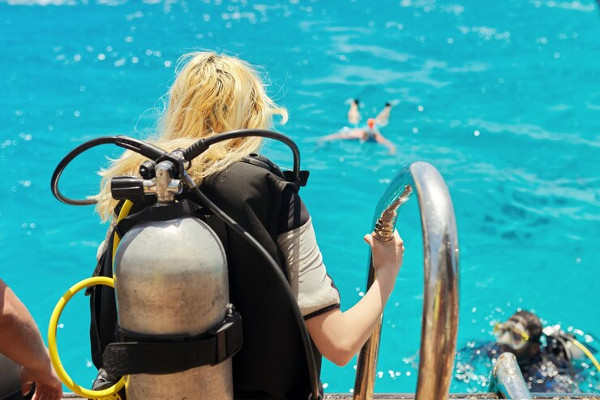
Tabular array of Contents
- 1 How much does a scuba tank weigh?
- 2 How much heavier is a full scuba tank?
- 3 Scuba diving tank sizes
- 4 What almost cost and prices?
- v What is a scuba tank filled with?
- six Scuba diving gas mixes
-
- 6.0.1 Air
- 6.0.2 Nitrox
- 6.0.iii Trimix
- 6.0.4 Decompression gases: Nitrox 40 to 99% AND 100% Oxygen
-
- 7 What are diving oxygen tanks fabricated of?
- 8 Steel vs Aluminum Scuba Cylinders
- 9 How often practise scuba tanks need to exist hydro tested?
- 10 Maintenance
-
- x.0.1 Scuba Diving Cylinder Visual Test
- 10.0.two Scuba Diving Cylinder Hydrostatic Test
-
- 11 Tips for maintenance
- 12 How to refill diving tank rust
- thirteen How long should a scuba regulators last?
- 13.ane Check out these interesting articles:
How much does a scuba tank weigh?
Have you ever wondered how much a scuba tank weights?
A typical scuba tank is 12 liters in volume and 230 bar pressure level and unfilled volition weigh effectually 16kg (35 lbs).
The factors that affect weight are, tank size, pressure, and material.
A filled tank with compressed air and a valve will add around 3.5kgs to the total weight.
Here is a comparative table of manufacturers with their corresponding weights.
| Model | Volume | Pressure | Material | Weight (kg) |
| Dir Zone | 12L | 230 Bar | Steel | 13.8 |
| Faber | 12L | 232 Bar | Steel | 13.6 |
| Beaver | 12L | 232 Bar | Steel | 16.0 |
| Beaver | 12L | 300 Bar | Steel | 16.0 |
| Faber | 15L | 232 Bar | Steel | eighteen.0 |
| ScubaPro | 12L | 232 Bar | Steel | xv.1 |
| BTS | 12L | 300 Bar | Steel | 18.0 |
| Luxfer | 11.1 | 207 Bar | Aluminium | 16.0 |
| MES | xi.1 | 207 Bar | Aluminium | 14.three |
Surely the tank is the heaviest part of the diving equipment.
The complete diving equipment, and even if the tank is empty, it easily weighs around 22 kilos
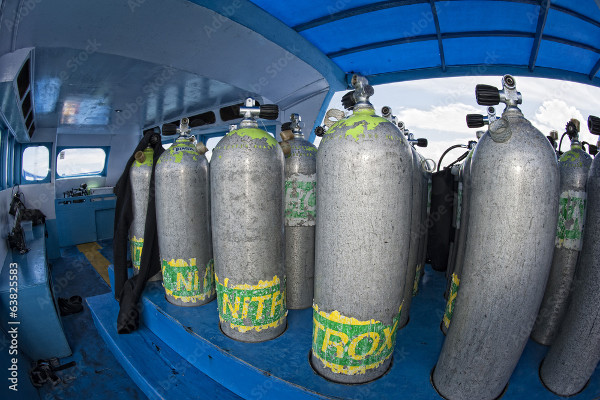
How much heavier is a full scuba tank?
There are several scientific formulas for computing the weight of gas.
Here is the more mutual.
Gas weight of air (in kg) = 0.0012 x pressure in bar x volume in liters
With these formulas, y'all can calculate how much above the base of operations weight you will exist carrying if the tank is filled.
They have loftier buoyancy, which makes easier to reach neutral buoyancy.
- 12 liter tank at 232 bar is 0.0012 ten 232 x 12 = 3.34kg of air
- 12 liter tank at 300 bar is 0.0012 10 300 x 12 = four.32kg of air
- eleven.1 liter tank at 207 bar is 0.0012 x 207 x eleven.i = ii.75kg of air
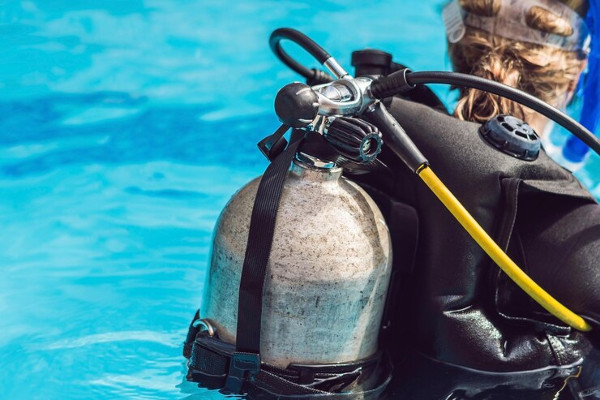
Scuba diving tank sizes
Near sizes, they are standardized among divers around the world. Hither are 3 of the most commonly used scuba tanks sizes.
Their sizes are mostly measured by the air capacity they behave. The unit of measurement is in cubic feet.
100 CU FT, 232 BAR
This steel cylinder is the most unremarkably used among all divers.
They come in two sizes (different dimensions), but that should not affect the cost of filling them because they carry the same amount of air.
● 80 CU FT, 207 BAR (S80)
The cloth of this is aluminium. This a footling smaller scuba tank is more utilize by recreational divers.
The cost of filling a scuba tank is not stock-still. It really depends on what you fill it with.
● 25 CU FT, 232 BAR (EMERGENCY CYLINDER)
This type is employ every bit an emergency reserve. Normally information technology goes on the side of the main tank. It is small and meaty.
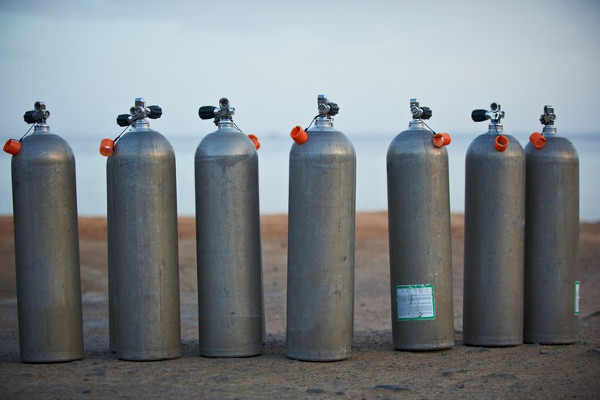
Read likewise: Diving in Costa rica
What nigh price and prices?
There are various factors that affects toll. Here is a tabular array for a reference.
Prices
| Gas Type | Capacity | Price |
|---|---|---|
| Nitrox | 0-twoscore cu ft | $3-9 |
| Nitrox | Upwardly to 80 cu ft | $5-20 |
| Nitrox | Upward to 100 cu ft | $7-27 |
| Nitrox | Up to 120 cu ft | $10-$32 |
What is a scuba tank filled with?
The scuba tank contains a mixture of gases that emulate the air we commonly breathe.
These gases are compressed at a pressure of 200 or 300 bars depending on their characteristics, and then that they come out with force when we open the faucet and to store a greater volume.
Observe that the Compressed air is a mixture of 21% oxygen, 78% nitrogen and a portion of water vapor.
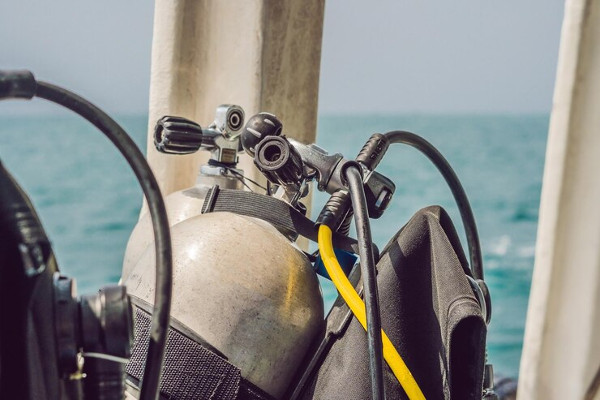
Scuba diving gas mixes
Many people incorrectly phone call the scuba tank an oxygen tank. Although it seems only an expression, it is important that you know that divers can also breathe other gases.
The more commons are nitrox, as well as technical mixes.
What'due south the departure between all these scuba diving gas mixes?
Air
Almost all dive centers employ air as gas for diving. Air is 79 Percent Nitrogen, 21 Pct Oxygen
The main reason is that it contains plenty oxygen to go on the states underwater, and since nosotros find it all effectually information technology is relatively inexpensive.
The problem is that during our descent and bottom time, our tissues are absorbing nitrogen.
On ascent, the tissues release this actress nitrogen in a process chosen off-gassing. Nitrogen loading limits recreational divers' lesser times and how fast they tin ascend.
The downside is that during our descent and bottom time, our tissues are absorbing nitrogen.
In the manner up, the tissues release this actress nitrogen in a procedure chosen off-gassing.
Nitrogen loading limits recreational defined' bottom times and how fast they tin arise. In that location are depth limitations when using air. The reason is that nitrogen becomes narcotic as it goes deeper. Therefore, the maximum depth for recreational diving is twoscore meters, or 130 feet, which is the equivalent.
In relation to the cost, information technology is almost e'er included in the diving packages. For the filling sometimes they charge a pocket-sized catechism.
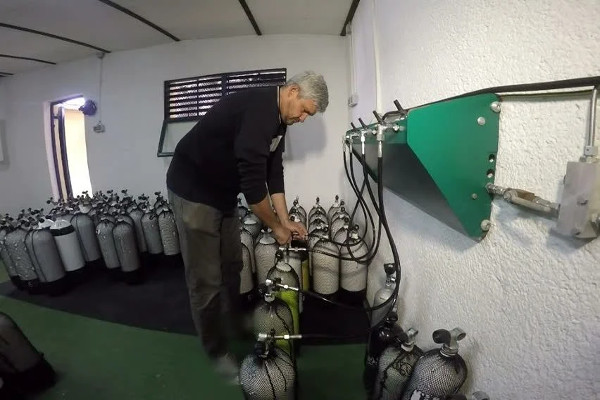
Nitrox
Enriched Air, also called Oxygen Enriched Air, or only Nitrox.
Nitrox contains from 22 to xl percent oxygen. The most common mixes are 32% and 36% oxygen. They are also known as EAN32 and EAN 36.
Some new divers have the idea that with nitrox they will exist able to dive deeper and stay underwater longer.
This theory is non correct. Nitrox is a shallow diving gas. What nitrox does let is to extend the no decompression limit, compared to air.
Since nitrox contains more oxygen, it contains less nitrogen. This ways your body absorbs less nitrogen at a given depth compared to diving in air. This explains why you tin extend your NDL(No Decompression Limits).
Just staying down longer with less nitrogen in the tank will still produce the same decompression risk every bit using air for less time at a given depth.
Considering that oxygen becomes toxic with increasing depth, every nitrox mixture has a maximum depth for a particular dive, with shallower maximums than air.
This is one is almost widely available of scuba diving gas mixes.
Well-nigh the toll, dive shops usually accuse per cylinder.
EANx / Nitrox and Oxygen Fill Prices.
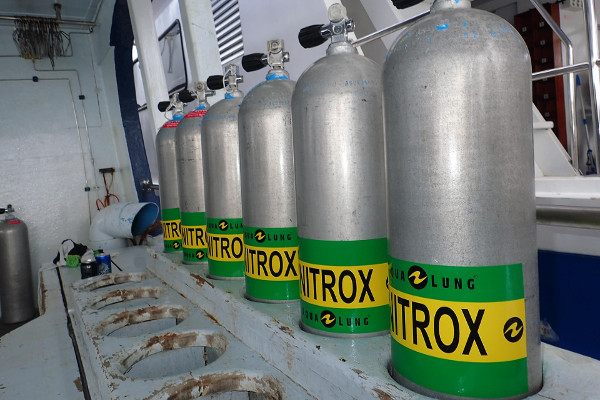
| Item | Price |
| Tanks-A-Lot Fill Card | $50.00 |
| Enriched Air Fill (32% O2) | $12.00 |
| Enriched Air Fill (Custom 22% to 40% O2) | $eighteen.00 |
| Oxygen 0-40 Cubic Feet | $25.00 |
| Oxygen per cubic pes (twoscore Cuf or More than) | $0.65 per cubic pes |
Trimix
When nosotros talk about trimix nosotros are in the area of technical diving.
Trimix is a mixture of oxygen, nitrogen and helium.
Why adding helium? Well, we know that nitrogen becomes narcotic as we go deeper.
Helium is an inert gas, meaning it does not react with our bodies at conventional scuba depths.
So if nosotros supercede some of the nitrogen with helium, nosotros can go deeper and still have a clear head.
So-called normoxic trimix does allows divers to do just that. A common mixture is 21/35, which has 21 per centum oxygen, 35 percent helium and 44 percentage nitrogen.
Another common mixture is eighteen/45, with 18 pct oxygen and 45 percent helium. These mixtures permit technical divers to hang around at up to 197 feet (60 m) — and really remember their dive.
Dives whatsoever deeper than 197 anxiety require hypoxic trimix. In this mixture, helium replaces some of the nitrogen and oxygen content.
Doing so reduces the risk of oxygen toxicity at depths of around 328 anxiety (100 grand). A typical hypoxic mixture at this depth would be ten/70 (x percent oxygen and seventy percent helium).
Helium is quite expensive, and the toll of filling tanks volition vary profoundly depending on the depth and equipment configuration.
People who do a lot of deep diving employ rebreathers to continue gas costs downwardly.
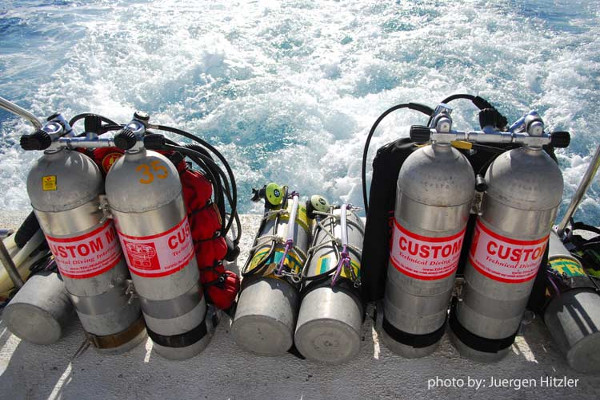
Run into also Scuba tank: the essentials
Decompression gases: Nitrox twoscore to 99% AND 100% Oxygen
This type of gas is for qualified technical defined. It is for technical diving courses.
You lot will need to be qualified as advanced nitrox/Tec 40, or Tec45 diver/decompression procedures to rent tanks.
Decompression gas is a piddling more than expensive than nitrox.
What are diving oxygen tanks made of?
Diving cylinders tanks are unremarkably manufactured from aluminium or steel alloys.
When used on a scuba fix are normally fitted with one of two mutual types of cylinder valve, used for filling and connection to the regulator.
The industry of the aluminum bottle begins by cutting an aluminum cylinder.
The size will depend on the concluding size of the bottle but is usually one/3 of the concluding size.
The material is cleaned, washed and centrifuged to then get through a process that under pressure molds the trunk of the diving bottle.
Steel vs Aluminum Scuba Cylinders
- Steel scuba diving tanks are the final product of the process named "deep draw". The "deep draw" process involves a high-quality chrome-molybdenum steel blank drawn into the form with a machined punch.
- Steel cylinders are more resistant than aluminum cylinders.
- The production of a steel cylinder requires less raw material than that of aluminum.
- In the production of steel cylinder there is less material waste.
- Steel scuba tanks have a lower overall weight and better buoyancy characteristics. This means that Steel tanks modify from negative to neutral buoyancy during a dive, allowing the diver to have a more than consistent weight and end the dive better balanced.
- Steel scuba tanks are the preferred choice for many divers considering the buoyancy feature helps dry suit diving.
- Steel diving cylinders have working pressures between 232 bar and 300 bars. Diving cylinders rated for 300 bars are heavier every bit they have thicker walls to be stronger.
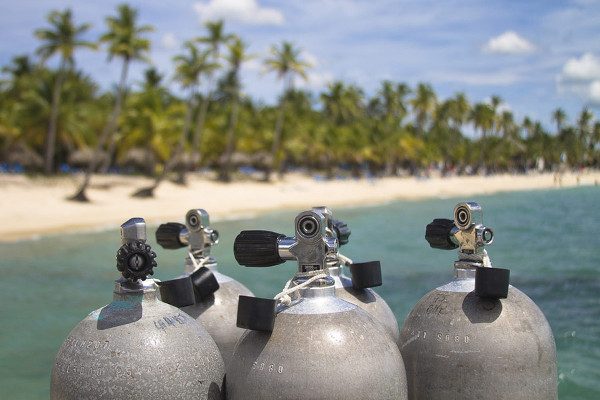
How often practise scuba tanks demand to be hydro tested?
Containers that are intended to send compressed air go through a test menses.
Too, every certain menstruum of time they must exist evaluated to verify their status and operation.
This requirement is common to most countries.
The verification consists of an internal visual bank check and a hydrostatic exam. Scuba tanks must be rigorously inspected, dissimilar common compressed air tanks, because scuba tanks are used in a more aggressive corrosive environment, such as water and particularly seawater.
What they do in the hydrostatic test is pressing the cylinder to its exam pressure (usually 5/3 or 3/2 of the working pressure level) and measuring its book before and after the test.
If the volume of the cylinder increases,that means that ways the cylinder fails the test and must be removed from service.
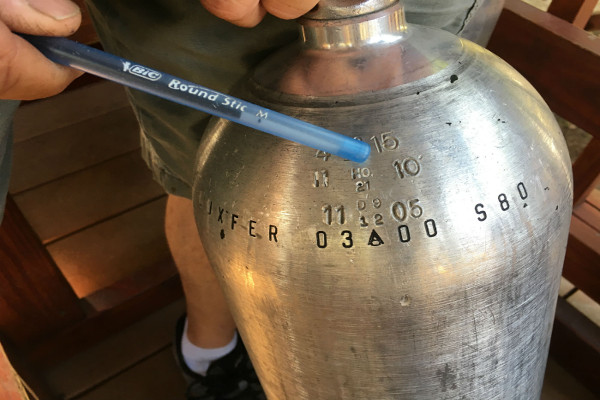
Maintenance
Scuba Diving Cylinder Visual Test
One of the biggest issues affecting scuba cylinders is wet, which corrodes and makes the cylinder weaker.
Co-ordinate to the studies carried out, the corrosion in the cylinders that are used to fill them with pressurized air and nitrox advances a hundred times faster than some other container of pressurized elements.
The useful life of a well-maintained steel cylinder tin be xl years. The aluminum scuba cylinder tin can serve upwardly to xx years, or 1,000 pressure tests.
In do a tank rarely reaches that level.
New cylinders are hydrostatically tested before leaving the factory, and this date is engraved on the cylinder head. For example: 2022/02 (year 2022, month of Feb)
Scuba cylinders must be visually tested every 2 and a half years, according to today'due south standards.
What do they expect for in the visual tests?
Visual tests is about checking for protrusions, corrosion and cracks. The general condition of the cylinder and the valve are verified.
When the tank passes the test, a sticker is placed on information technology, normally blue or green, which contains the date of the check and the date of the next exam.
The useful life of a cylinder, in practice, really depends on many factors. That's why it's so important to examination regularly, and not to fill upward the tank if in doubt.
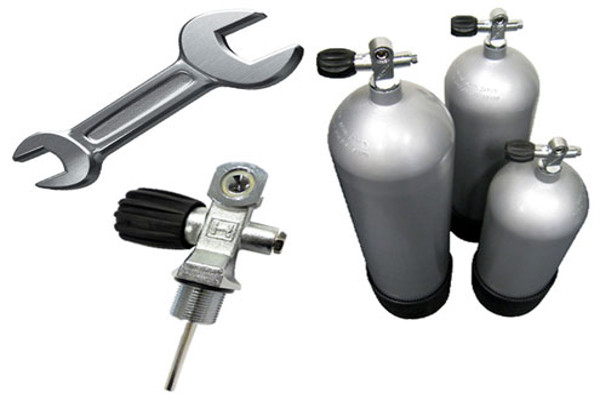
Scuba Diving Cylinder Hydrostatic Test
Diving cylinders must exist hydrostatically tested every v years in Europe. This tin vary a picayune bit from identify to identify.
Before the hydrostatic examination, the visual test must exist carried out. That is, the visual exam is part of the hydrostatic test, and precedes it.
How a hydrostatic test is performed. The scuba cylinder is pressurized to a higher degree than its normal working level, and the book of the cylinder is measured before and subsequently pressurization.
If there is an increase or variation in the book of the diving cylinder, it means that the cylinder has failed the test and must be withdrawn from circulation.
Once the examination has been passed, the regulatory body in charge of carrying out the test places a sticker on the bottle, which indicates the date of the exam, and too the date of the next inspection.
Tips for maintenance
Here are some tips to take into business relationship when thinking of diving tank maintenance:
- Take care to secure your tank at all times, and so it does not fall or roll, thereby injuring others, damaging equipment, or even yourself.
- Exercise not let them empty completely. Always leave them with air inside to preclude wet from forming.
- Call back to rinse the bottle and faucet with fresh water and store them in a cool identify.
- Take your cylinder visually checked in one case a twelvemonth and force per unit area checked every bit needed.
- Follow the maintenance considerations according to the manufacturer'south instructions.
How to refill diving tank rust
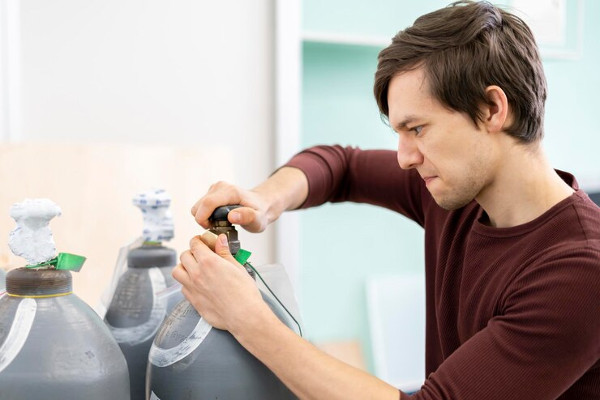
Yous tin can purchase tanks from a scuba store and get them refilled as long every bit they are in good and working condition.
Diving tanks are usually filled with compressed air.
This compressed air must be breathable, that is, treated and then that it can be used for human breath.
Depending on the use of the bottles, they can be filled with air at a pressure between 200 and 300 bar.
How long should a scuba regulators concluding?
The correct functioning of the regulator depends on the proper maintenance that information technology has.
Therefore, our advice is to take the regulator to an authorized service center for inspection at least one time a year.
Yous might have to replace the valve every two years or every 200 diving hours.
Bank check out these interesting articles:
Source: https://www.costaricadiveandsurf.com/diving-tank-guide-properties-maintenance-prices/
Posted by: escobedogerry1946.blogspot.com


0 Response to "How To Repair Diving Tank Rust"
Post a Comment